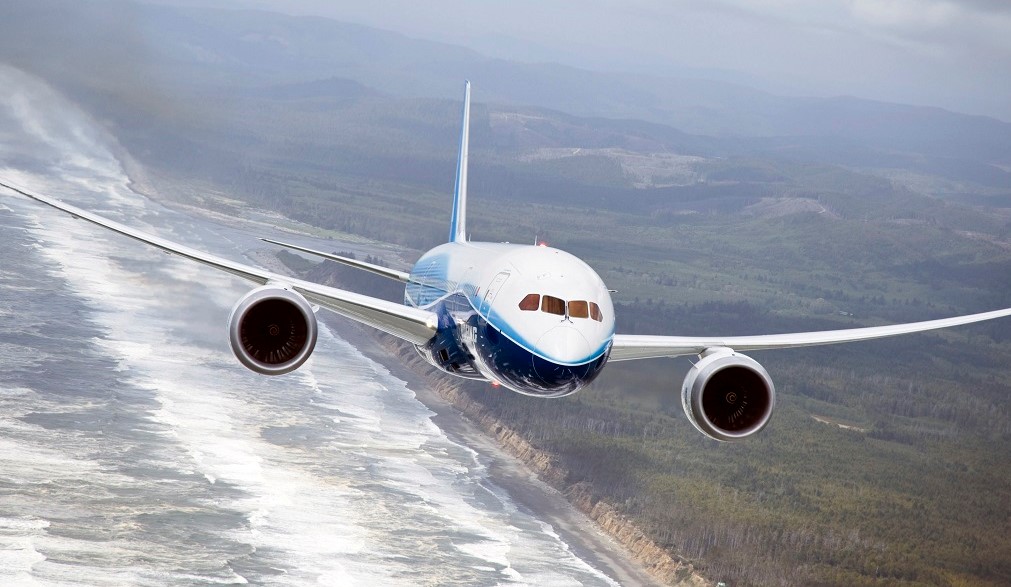Dreamliner defects see analysts slash Boeing outlook
05 January, 2021
4 min read
By joining our newsletter, you agree to our Privacy Policy


Leading aviation analysts at New-York-based Bernstein have slashed their outlook for Boeing as the company grapples with widening manufacturing defects affecting hundreds of its 787 Dreamliner aircraft.
The defects stopped 787 deliveries in November as Boeing reviewed its manufacturing plants and the manufacturer reportedly delivered just one aircraft in December.
A worsening outlook for the 787 prompted Bernstein in its latest report to downgrade Boeing stock to underperform and slash its price target from $US221 to $US199 per share.
READ: World's top 20 COVID-19 compliant airlines.
The issue is another blow to Boeing after a horror run prompted by two fatal crashes that grounded its 737 MAX aircraft in 2019.
“Q4 was supposed to be a big quarter for 787 deliveries as inspections for manufacturing defects were to be completed and stored aircraft delivered,’’ Bernstein said.
“This did not happen. We saw only one delivery in December and none in November.
“It appears non-conformities related to the fuselage are more extensive than originally thought. Delivery delays continue to stretch out.”
Boeing has acknowledged that almost 900 aircraft are affected by the defects but says there is no immediate safety of flight issue.
Problems were revealed in August when The Wall Street Journal reported that eight relatively new aircraft flying with airlines such as Air Canada, United Airlines and Singapore Airlines were taken out of service after Boeing had identified an issue with the join between the aft and center fuselage sections.
The problem was the fuselage joins, done at the company’s plant in Charlotte, did not meet the specified skin flatness tolerances and the company said this needed to be addressed to prevent greater long-term fatigue in the rear section of the aircraft.
The new flaw came after Boeing had previously discovered that small pieces used to fill gaps, known as shims, were the wrong size.
In September, Boeing acknowledged there were problems with the structural join of the horizontal stabilizer. Again, this was not an immediate safety of flight issue but the company said this could also lead to increased fatigue, a need for more inspections as well as a reduction in an aircraft’s lifespan.
In December. The Seattle Times reported Boeing had found the manufacturing defect extended beyond the aft section of the fuselage to the forward section of the plane.
The newspaper speculated that there was a problem with robotic equipment used to spin the composite fuselages and quoted a Boeing spokesman saying the US Federal Aviation Administration (FAA) had agreed that that aircraft already delivered could be inspected at the next scheduled maintenance check.
Bernstein accepted that the impact of the problems was confined to long-term fatigue, noting the FAA would have reacted if there were safety consequences, particularly in the aftermath of the MAX issues.
But it added: “Given the deterioration of the 787 situation, we no longer expect a quick resolution.
“We foresee added delays and costs associated with new aircraft and the potential for significant costs to address aircraft in service.
“It remains to be seen if there are any regulatory actions associated with the 787 structural work.”
The report said it expected to see more pressure on Boeing’s cash position due to delivery delays and an unknown cost associated with repairs.
The way Boeing pays for engines, likely customer compensation and a lower than expected delivery rate of five 787s a month in 2021/22 were among the other worries.
“Perhaps the biggest concern we have is uncertainty,’’ it said. “the issues have steadily gotten worse as these inspections have taken place.
“We just do not know if there will ultimately be a regulator requirement or how extensive delays and costs will be.”
Other factors playing into the downgrade included a revision of estimated 2020 737 MAX deliveries from 26 to 22 and a revised expectation that the 777X would now be delivered in 2023, rather than 2022.
“Last week, Emirates (a launch customer) announced that it would not take delivery of the 777X until 2023,’’ the report said.
“We assume that the combination of certification timeline and a desire of customers to delay widebody deliveries pushes the timing out.
“Given the likelihood of more certification scrutiny after the MAX issues, delays in the timeline should not be surprising.”
Get the latest news and updates straight to your inbox
No spam, no hassle, no fuss, just airline news direct to you.
By joining our newsletter, you agree to our Privacy Policy
Find us on social media
Comments
No comments yet, be the first to write one.

